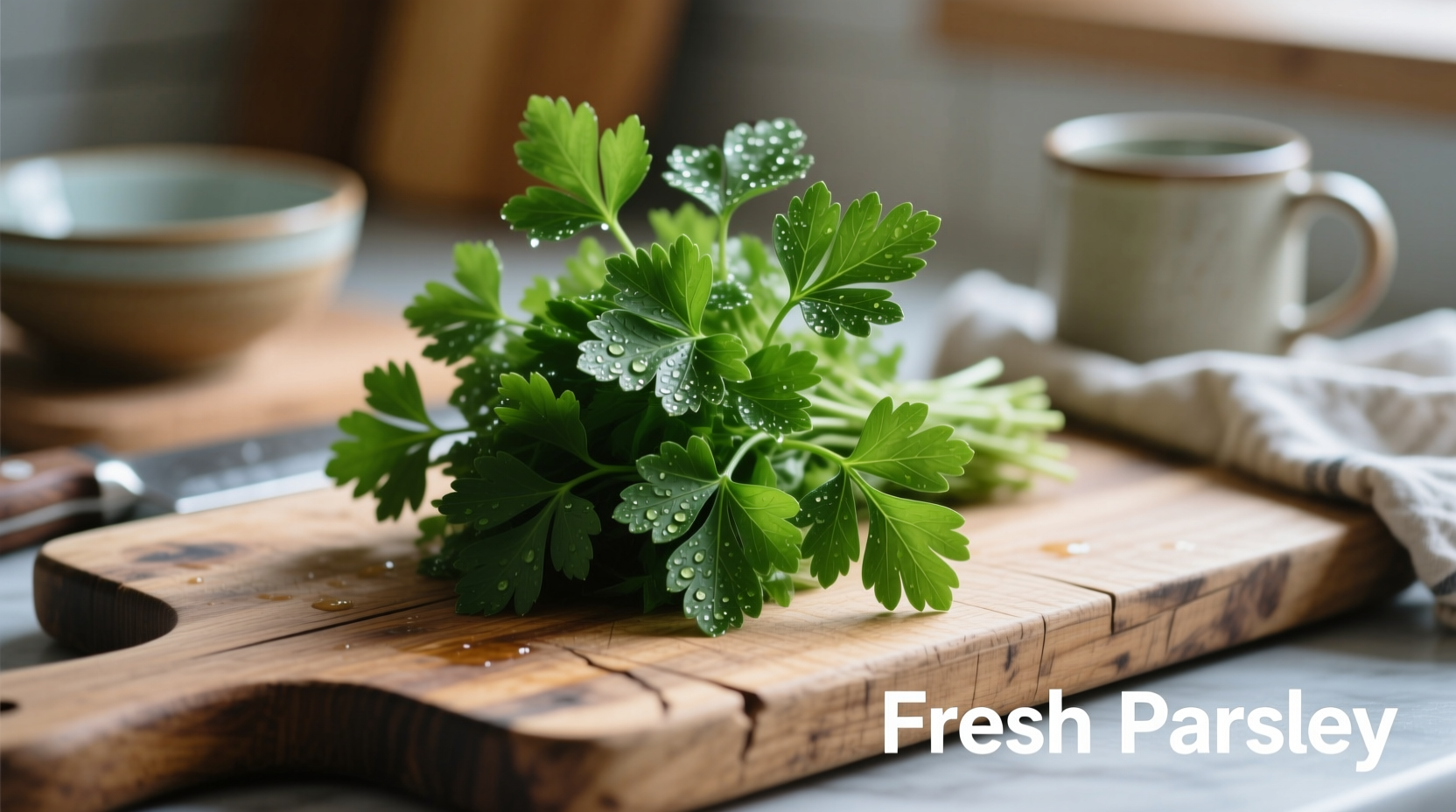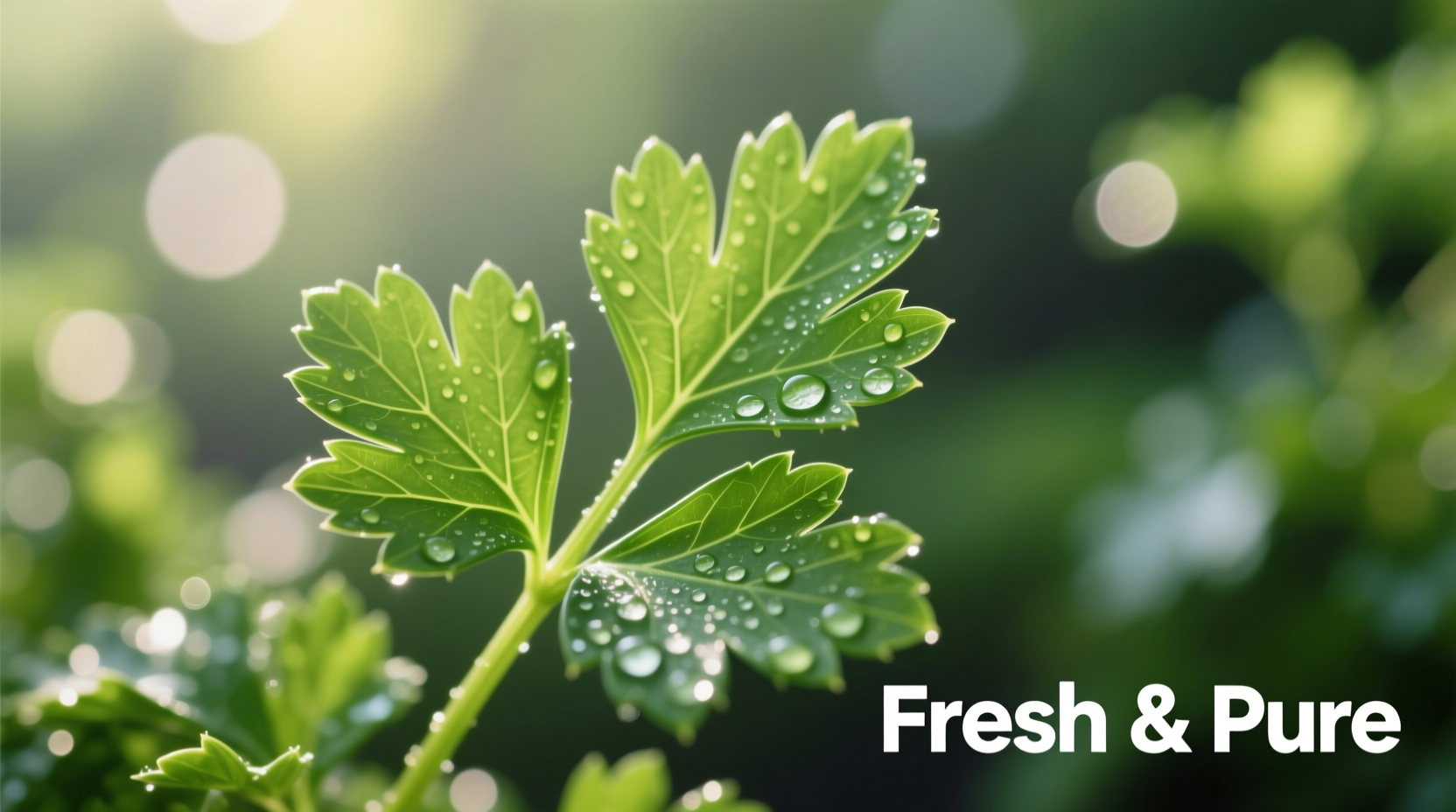When you reach for parsley in your kitchen, understanding the difference between varieties can transform your cooking. Flat leaf parsley isn't just another herb—it's a culinary powerhouse that professional chefs consistently choose for its bold flavor and practical advantages. This guide reveals exactly why flat leaf parsley deserves a permanent spot in your herb collection and how to maximize its potential in everyday cooking.
What Makes Flat Leaf Parsley Different?
Unlike its curly counterpart, flat leaf parsley features smooth, broad leaves that grow in a more compact pattern. This variety, Petroselinum crispum neapolitanum, contains higher concentrations of essential oils that deliver a more pronounced, slightly peppery flavor profile. The difference isn't merely aesthetic—these botanical characteristics translate directly to culinary performance.
| Characteristic | Flat Leaf Parsley | Curly Parsley |
|---|---|---|
| Flavor Intensity | Stronger, more robust | Milder, more delicate |
| Leaf Texture | Smooth, flat leaves | Crinkled, ruffled leaves |
| Culinary Use | Preferred for cooking and sauces | Often used as garnish |
| Storage Life | 3-5 days refrigerated | 5-7 days refrigerated |
| Freezing Suitability | Excellent for freezing | Less suitable for freezing |
Why Chefs Prefer Flat Leaf for Serious Cooking
Professional kitchens consistently choose flat leaf parsley for good reason. Its stronger flavor holds up during cooking processes where curly parsley would fade. When making pesto, chimichurri, or gremolata, flat leaf delivers the herbaceous punch these sauces require. The smooth leaves also chop more cleanly without trapping moisture, making them ideal for incorporating into dishes where texture matters.
According to research from the USDA National Nutrient Database, flat leaf parsley contains significantly higher levels of certain nutrients compared to curly varieties. Just one-quarter cup provides over 200% of your daily vitamin K requirement, along with substantial vitamin C and folate. USDA data confirms its nutritional superiority, making it both a flavor enhancer and nutritional powerhouse.
Global Culinary Applications
Flat leaf parsley forms the backbone of numerous traditional dishes worldwide. In Middle Eastern cuisine, it's the dominant herb in tabbouleh, where its robust flavor stands up to bulgur wheat and lemon dressing. Mediterranean cooks rely on it for salsa verde and persillade, while French chefs use it as a key component in fines herbes blends.
When preparing Italian dishes like pasta puttanesca or osso buco, flat leaf parsley's ability to maintain its integrity during cooking makes it indispensable. Unlike curly parsley, which can become limp and lose flavor when heated, flat leaf retains its essential oils and structural integrity, delivering consistent flavor throughout the cooking process.

Practical Selection and Storage Guide
When selecting flat leaf parsley, look for vibrant green leaves without yellowing or wilting. The stems should be crisp and firm. Avoid bunches with dark spots or yellow leaves, which indicate age and diminished flavor.
For optimal storage, treat flat leaf parsley like fresh flowers. Trim the stems and place in a glass with about an inch of water, covering loosely with a plastic bag. Store in the refrigerator for up to five days. For longer storage, chop the leaves and freeze in olive oil cubes—this method preserves both flavor and texture better than freezing whole leaves.
Expert Cooking Techniques
Maximize flat leaf parsley's potential with these professional techniques:
- Chop finely for sauces: The smooth leaves chop more uniformly than curly varieties, creating better texture integration in sauces
- Add at the right moment: For cooked dishes, add during the last 5-10 minutes to preserve flavor; for raw applications, chop 15-20 minutes before serving to allow flavors to develop
- Use the stems: Don't discard the stems—they contain concentrated flavor perfect for stocks, soups, and stews
- Create herb oils: Blend with high-quality olive oil for a versatile finishing touch
When Substitutions Make Sense
While nothing replicates flat leaf parsley's unique flavor profile exactly, understanding substitution scenarios helps in pinch situations. For raw applications like salads or garnishes, cilantro can work in Latin-inspired dishes, though it delivers a distinctly different flavor. In cooked Mediterranean dishes, a combination of celery leaves and chervil provides the closest approximation.
Remember that substitutions work best when considering the dish's cultural context. In Middle Eastern cooking, fresh cilantro might be acceptable, while in Italian cuisine, fresh basil would better maintain the regional flavor profile when parsley is unavailable.
Common Questions About Flat Leaf Parsley
Understanding these frequently asked questions helps maximize your culinary success with this versatile herb.











 浙公网安备
33010002000092号
浙公网安备
33010002000092号 浙B2-20120091-4
浙B2-20120091-4